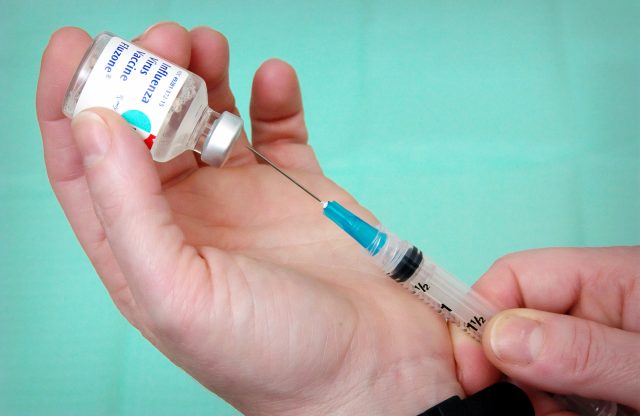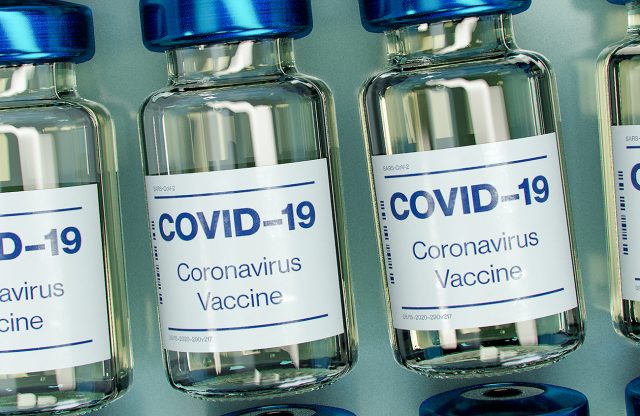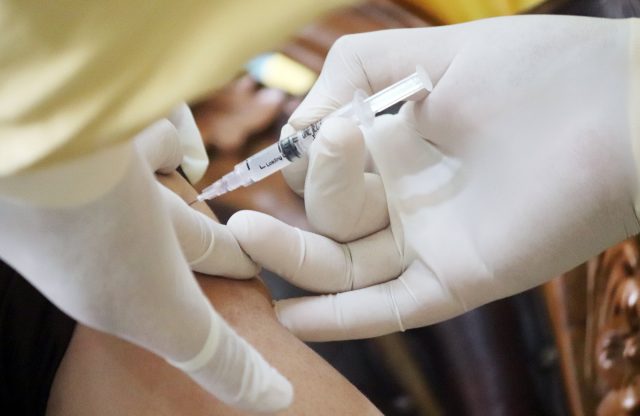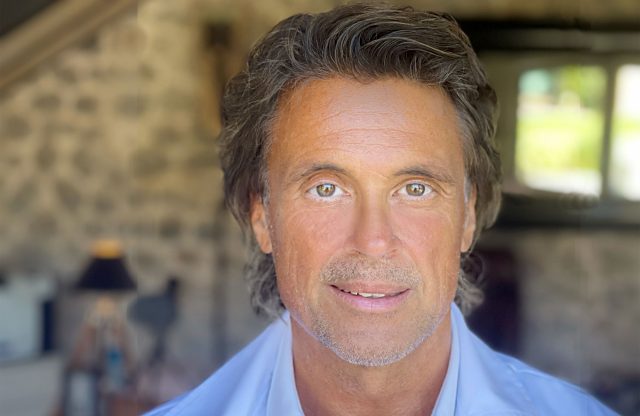As Dr Robert Hess expected, the pandemic is becoming more complex

Dr Robert Hess – 29/07/2021
As Dr Robert Hess expected, the pandemic is becoming more complex and problematic in nature, which makes it all the more difficult to make any firm predictions for the autumn.
In focus: Vaccine side-effects versus post-acute sequelae (“Long Covid”).
The forecast of Dr Robert Hess in the spring of 2021 that the pandemic would take off in a more complex and problematic direction ran contrary to general opinion. It is now being vindicated even earlier than we expected.
It is definitely not the case that the end of the pandemic is in sight, as claimed by various colleagues as well as some government leaders in May and June of this year. The reduced efficacy of the first-generation vaccines against the recently arrived and now prevalent Delta variant has introduced an element of considerable uncertainty that is also impacting on forecasts for the global economy.
As indicated in the previous Keynote, our current focus in the research we perform on behalf of our clients is on deciding whether their needs are best met by receiving a booster jab or by waiting for a next-generation vaccine to become available and, in either case, what the optimum timing might be.
We have already established reference values in our retesting procedures for antibody development and T-cell immunity, and we are confident that the WHO will adopt similar or even identical values by the end of the year. These are now the clear reference values for all our clients in deciding whether there is a need for action to ensure immunity against the SARS-CoV-2 virus and its mutants. This gives rise to a number of questions that we will clarify individually for each of our clients. The two key questions concern the timing and the choice of vaccine, specifically whether this should be a booster shot of the same vaccine. A third dose of the BioNTech vaccine can have the effect of increasing antibody counts by as much as fivefold. This is an attractive option for those clients who have antibody levels of less than 1,000 BAU/ml and thus far below our reference value.
The alternative is to wait for the next generation of vaccines to become available. As also reported in the previous Keynote, BioNTech has developed a proprietary vaccine to specifically target the Delta variant spike protein. This vaccine has already gone into production and is awaiting emergency approval from the FDA and EMA. Here, too, a fundamental decision must be made – booster or next-generation vaccine? What are the advantages and disadvantages?
The disadvantage of a next-generation vaccination could be that the next virus variant – and we have to assume that this already exists in the form of the Lambda or similar – could produce a change in the spike protein, thereby reducing the effectiveness of the newly developed vaccine, though not as much as that of its predecessors. This is the very race we wrote about several months ago and which is now well and truly underway. Unfortunately, the vaccine manufacturers are still in reaction mode at the moment, having to firefight the variants as and when they crop up. This consumes huge amounts of time and effort.
As to whether we are already on the home straight or only the opening lap of the race against new variants and whether the pace of mutation will pick up even further, Dr Robert Hess shares the general opinion that the odds are currently 50-50. In other words, there is a very real risk that the changes on the spike protein will become even more prominent. This issue carries over into the debate on super mutants.
On the assumption that the rate of mutation will continue to accelerate, this is a race that is going to be difficult to win. We still have the potential offered by artificial intelligence to make predictions about future mutations and thus stay one step ahead of the virus. But the probability of a super mutant has also increased significantly. The definition of a super mutant is that the virus has undergone a genetic change of such magnitude that the current vaccines become less than 20% effective.
The main argument against a third booster jab with the current generation of vaccines is that they are clearly less effective against Delta than against the Alpha variant, even if there are efficacy studies that seem to indicate the opposite. However, the number of people who are being hospitalized despite having been double-vaccinated is rising sharply in virtually all countries. In this matter, we have to disagree with our colleague Anthony Fauci in the USA, who attributes the problem of rising new infections to large numbers of non-vaccinated people becoming infected. This is certainly a major factor, but at the same time, the significantly reduced effectiveness of the vaccines currently in use is also a reason why the infection and hospitalization curves on the graph are heading upwards. In addition, there has been an increase in mortality in countries that have had the Delta variant for some time. The studies from Canada on the link between mortality and Delta as well as the latest data from the UK confirm that the new variant causes the death rate to rise. The scenarios differ slightly, in that the rise in number of cases in England is probably due to a relaxation of social distancing during the recent Euro 2021 Football Championship. But all in all, this is an indeterminate development that is very difficult to interpret.
The deliberations about the Delta variant, which have been going on in Europe for some time, have now also reached the USA. Delta was ignored there for too long, and in the meantime, there are districts in California where masks are once again being made compulsory in enclosed public spaces, even for vaccinated persons. The complexity of the situation is also global in the sense that political decision-makers are reluctant to issue any clear guidance on whether booster jabs or next-generation vaccines are the way ahead. For pandemic management and to achieve herd immunity, it is essential to have clarity on vaccination of children under 12 and teenagers. Because of the exaggerated immune response to vaccination, especially in younger age groups, the appropriate dosage should be based on the same categories that apply with any medicine, namely “Babies”, “Children”, “Adolescents” and “Adults”. These should be introduced as soon as possible as a crucial success factor in pandemic response. This is a move Dr Robert Hess was already calling for a year ago.
The politicians and licensing authorities are showing some reticence in regard to next-generation vaccines, for example the one from BioNTech which is already being developed and produced in Mainz (Germany), because of a fear that the prospect of their arrival in the near future might further reduce take-up of the current generation of vaccines. In almost all countries of the western world, vaccine hesitancy is already high, and the availability of an upgraded Delta vaccine would reduce vaccination acceptance even further. It is therefore a topic of discussion that is not wanted either politically or by the WHO, which is a rather unfortunate state of affairs.
The booster jab is also a politically sensitive topic because the majority of the world’s population does not yet have access to any vaccine at all. Meanwhile, first-world countries such as Israel have already embarked on their third round of vaccination. This imbalance is an added complication to the whole situation, with disturbing consequences such as were witnessed last weekend when vaccine poverty provoked anti-government demonstrations in the emerging countries of Tunisia and Brazil as well as in several Third World countries.
At the same time, the precise opposite phenomenon is manifesting itself in western countries where supplies of vaccines are more than adequate. In France and Italy, for example, there were also mass demonstrations at the weekend, albeit in opposition to mass vaccination. Against this background, it is wholly understandable that the WHO currently opposes booster jabs on principle.
All in all, the issue of booster vaccination has been taken up too late by the political decision-makers. We have been pursuing our retest strategy to continuously monitor the SARS-CoV-2 immunity of our clients since June, which has flagged up a disappointing decrease in antibodies and in T-cell immunity. This came as a surprise even for us, and so we were obliged to consider the issue of booster vaccination sooner than expected. We have therefore decided to make recommendations to our clients regarding booster jab or next-generation vaccine on an individual basis. We aim to be in a position where we can issue appropriate recommendations to our clients by mid-August.
Around the world, governments of all political complexions are steadily moving away from the imposition of mandatory social measures towards the individual taking responsibility for protecting his or her own health and safety and that of others. We intend to provide our clients with an even more focused basis for decision-making. The UK has adopted something of a pioneering role here. We have been very pleasantly surprised that the majority of the population there is behaving prudently and only using their restored freedoms in moderation. We think this is the right approach. Each individual must be allowed to map his or her own route through the pandemic.
It is not surprising that there are still people who do not want to be vaccinated. The main reason for reluctance is the side-effects of vaccination that have been observed so far. Of course, this is only a cautious analysis, because we have to assume that there will be a considerable increase in vaccine-induced autoimmune diseases in the coming years. The relevant data will begin to emerge only gradually. On the other hand, we already know for certain that Long Covid sequelae are more severe and more enduring than the side-effects of the vaccines. In this context, there are more and more warning signs, especially from the FDA and EMA, of capillary leak syndromes associated with the Johnson & Johnson vaccine. This can lead to acute episodes of oedema, mainly in the body extremities and when blood pressure is low. Another alert issued in connection with the Johnson & Johnson vaccine concerns Guillain-Barré syndrome, a rare inflammatory neural disease that may occur around the six-week mark after vaccination. There are also the myocarditis syndromes associated with mRNA vaccinations. Pericarditis, an inflammation of the heart muscle or the pericardium, is more often triggered after the second dose of the vaccine. The first instances of autoimmune disease have now appeared with the Moderna vaccine, specifically immune thrombocytopenia. These cases are being closely studied by both the FDA and the EMA. We see a clear link here with the vaccine. Another side-effect of mRNA vaccination is the occurrence of dermatological problems, namely delayed reactions in the form of skin eczema and hives that are usually associated with urticaria. These are triggered by so-called lipid nanoparticles that serve as a sort of protective packaging for the mRNA. These nanoparticles have the ability to activate the immune defense cells directly, so that large amounts of histamines (i.e. inflammatory messengers) are released. Where urticaria-like reactions occur, this is generally after the second shot of vaccine, and they can lead to severe complications such as asthma.
The AstraZeneca vaccine also contains a substance known as polysorbate 80, which is used as an excipient in some cosmetic medicines and also has considerable allergic potential. For this reason, we recommend heterologous vaccination (i.e. cross-vaccination) as standard, with a first dose of AstraZeneca followed by an mRNA vaccine as the second. Here, too, the vaccine side-effects can be considerable, and much stronger than with a homogeneous vaccination regimen. That is why we only recommend cross-vaccination in older people where immunosenescence (i.e. the gradual deterioration of the immune system brought on by aging) has set in.
The harm caused by Long Covid is much more difficult to assess, and we will discuss it in more detail in the next Keynote. From the data that is now beginning to accumulate, it is apparent that 80% of those who had symptomatic infections continue to feel worse after three months than they did before the onset of the disease. This is an alarmingly high percentage. A variety of check-ups and monitoring activities show that around 20% have sustained clearly detectable organ damage. The age group most affected by organ damage is between 40 – 50 years old, individuals who were previously relatively healthy and had no pre-existing chronic illnesses. Organ damage can even be found among the youngest cohort of 20-year-olds. There is an above-average number of athletes, which is probably down to the fact that the body feels completely different and that the perception of performance loss is therefore naturally felt more keenly. There are also neurological consequences ranging from disorders such as loss of taste, nerve pain and deafness to aphasia, significantly reduced cognitive and cardiological performance, shortness of breath, etc.
Understandably, the main focus of the check-up recommendations we make to our clients is on heart disease. This is because the endothelium in individuals who have survived Covid-19 has undergone massive changes and has essentially aged by many years. This manifests itself in cardiac insufficiency, cardiac arrhythmias and changes in the pulmonary interstitium that inhibit gas exchange and lead to respiratory distress. We will give an update on the consequences of Long Covid in the next Keynote.
As inoculation is a highly complex area, other scientific avenues are being explored involving different techniques. We have looked at three of them in some detail. Two come from a single country, namely Israel. We suspect that, should there ever be a solution that avoids inoculation, for example by means of a virus static, then the Israeli manufacturers will be at the forefront.
First, we looked at the oral Covid-19 vaccines produced by Oravax Medical, a company that specializes in this field. Clinical trials are already underway in Israel. We will monitor this development in detail and report back at a later stage.
The second solution comes from SaNOtize, another Israeli company. It is a so-called “anti-corona nasal spray” containing antibodies obtained from bovine colostrum which has already successfully negotiated clinical phase 2. Here, too, there is hope for success.
The third solution we will be pursuing from a poll of almost 20 companies drawn up by our research team comes from Australia, where CRISPR (clustered regularly interspaced short palindromic repeats) “gene scissors” have been deployed to inactivate the coronavirus. Here, too, the success rate does not look at all bad – it proved relatively easy to stop the SARS-CoV-2 from replicating in an infected cell. The results of the project have been published in Nature Communications magazine. It is an exceptionally interesting project for us because it concerns our own field of expertise, namely genetic engineering. Once the virus is identified, the CRISPR enzyme is activated, which then proceeds to dissect the virus. We will, of course, keep you updated on this development.



